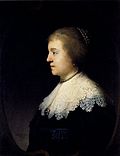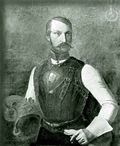County (Principality) of Solms-Braunfels Grafschaft (Fürstentum) Solms-Braunfels | |||||||||||||||
|---|---|---|---|---|---|---|---|---|---|---|---|---|---|---|---|
| 1258–1806 | |||||||||||||||
| Status | State of the Holy Roman Empire | ||||||||||||||
| Capital | Braunfels | ||||||||||||||
| Common languages | West Central German | ||||||||||||||
| Government | Principality | ||||||||||||||
| Historical era | Middle Ages | ||||||||||||||
• Partitioned from Solms | 1258 | ||||||||||||||
1325 | |||||||||||||||
• Partitioned to create Lich | 1409 | ||||||||||||||
1592 | |||||||||||||||
• Raised to principality | 1742 | ||||||||||||||
| 1806 | |||||||||||||||
| |||||||||||||||

Solms-Braunfels was a County and later Principality with Imperial immediacy in what is today the federal Land of Hesse in Germany.






